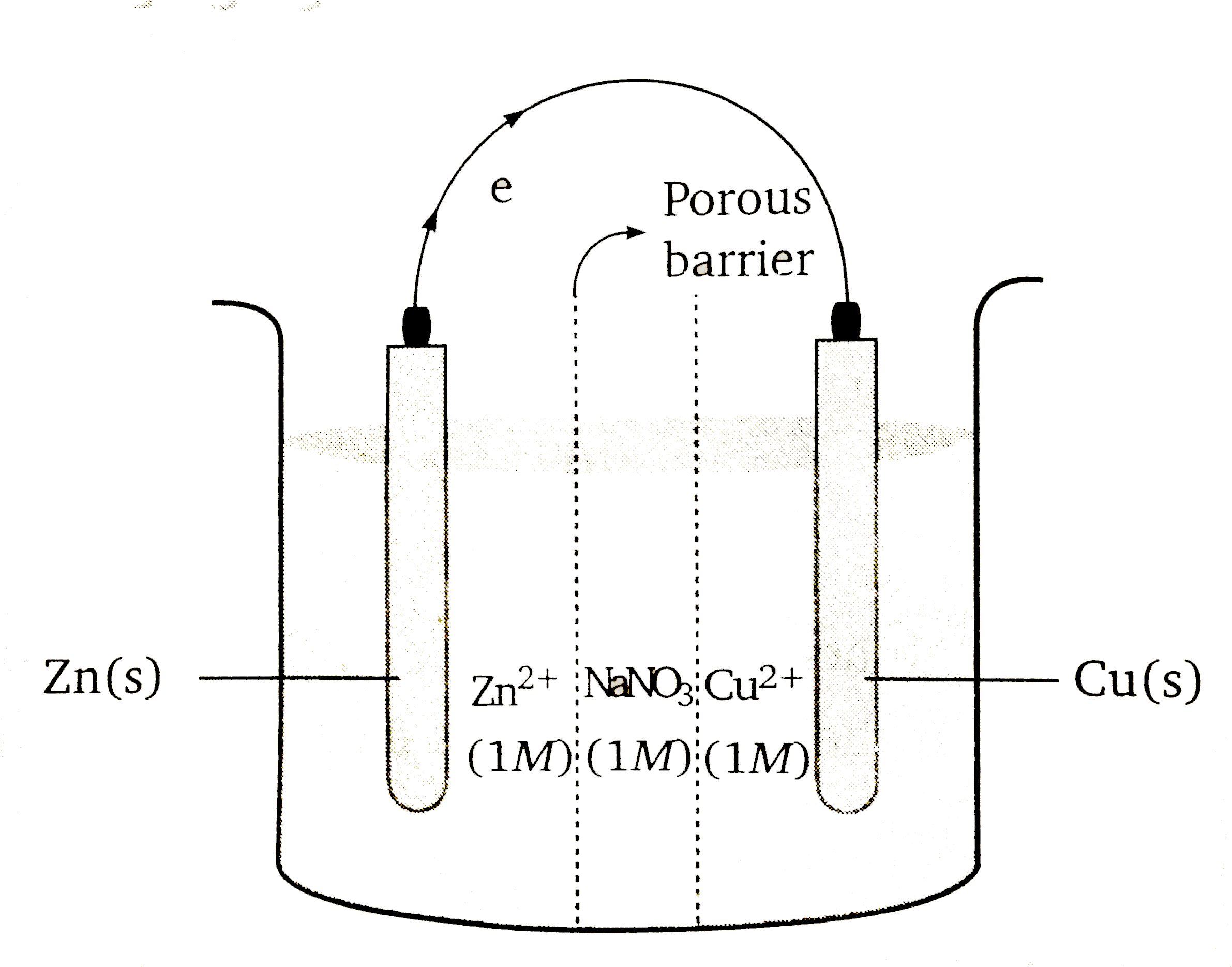The relation among conductance (G), specific conductance (K) and cell constant (l/A) is :
G=klA
G=kAl
Gk=lA
G=kAL
The correct Answer is:B
To find the relation among conductance (G), specific conductance (K), and cell constant (l/A), we can follow these steps:
1. Understand the Definitions:
- Conductance (G): It is the ability of a solution to conduct electricity and is defined as the reciprocal of resistance (R).
- Specific Conductance (K): It is the conductance of a solution per unit length and unit area, and is defined as the reciprocal of specific resistance (ρ).
- Cell Constant (l/A): It is defined as the ratio of the length of the conductor (l) to the cross-sectional area (A).
2. Write the Formula for Resistance:
- The resistance (R) of a conductor can be expressed as:
R=ρlA
where ρ is the resistivity (specific resistance), l is the length of the conductor, and A is the cross-sectional area.
3. Relate Conductance to Resistance:
- Since conductance (G) is the reciprocal of resistance (R), we can write:
G=1R
4. Substitute the Expression for Resistance:
- By substituting the expression for R into the conductance formula, we get:
G=1ρlA=Aρl
5. Relate Specific Conductance to Specific Resistance:
- Specific conductance (K) is defined as:
K=1ρ
Thus, we can rewrite the expression for G in terms of K:
G=K⋅Al
6. Final Relation:
- Rearranging the equation gives us the final relation among conductance (G), specific conductance (K), and cell constant (l/A):
G=K⋅Al
Conclusion:
The relation among conductance (G), specific conductance (K), and cell constant (l/A) is:
G=K⋅Al
- Conductance (G): It is the ability of a solution to conduct electricity and is defined as the reciprocal of resistance (R).
- Specific Conductance (K): It is the conductance of a solution per unit length and unit area, and is defined as the reciprocal of specific resistance (ρ).
- Cell Constant (l/A): It is defined as the ratio of the length of the conductor (l) to the cross-sectional area (A).
- The resistance (R) of a conductor can be expressed as:
R=ρlA
where ρ is the resistivity (specific resistance), l is the length of the conductor, and A is the cross-sectional area.
- Since conductance (G) is the reciprocal of resistance (R), we can write:
G=1R
- By substituting the expression for R into the conductance formula, we get:
G=1ρlA=Aρl
- Specific conductance (K) is defined as:
K=1ρ
Thus, we can rewrite the expression for G in terms of K:
G=K⋅Al
- Rearranging the equation gives us the final relation among conductance (G), specific conductance (K), and cell constant (l/A):
G=K⋅Al
The relation among conductance (G), specific conductance (K), and cell constant (l/A) is:
G=K⋅Al
Topper's Solved these Questions
- ELECTROCHEMISTRYBOOK - NARENDRA AWASTHI ENGLISHCHAPTER - ELECTROCHEMISTRYEXERCISE - LEVEL-2
28 Videos
- ELECTROCHEMISTRYBOOK - NARENDRA AWASTHI ENGLISHCHAPTER - ELECTROCHEMISTRYEXERCISE - LEVEL-3
37 Videos
- DILUTE SOLUTIONBOOK - NARENDRA AWASTHI ENGLISHCHAPTER - DILUTE SOLUTIONEXERCISE - leval-03
23 Videos
- GASEOUS STATEBOOK - NARENDRA AWASTHI ENGLISHCHAPTER - GASEOUS STATEEXERCISE - Subjective problems
15 Videos
Similar Questions
In the Hall process, aluminium is produced by the electrolysis of molten Al2O3. How many second would it take to produce enough aluminium by the Hall process to make a case of 24 cans of auminium soft-drink, if each can uses 5.0g of Al, a current of 9650amp is employed and the current efficiency of the cell is 90%:
View Solution
A Galvanic cell consits of three compartment as shown in figure. The first compartment contain ZnSO4(1M) and III compartment contain CuSO4(1M). The mid compartment contain NaNO3 (1M). Each compartment contain 1L solution:
E∘Zn2+/Zn=−0.76, E∘Cu2+/Cu=+0.34,
The concertation of Zn2+ in first compartment after passage of 0.1 F charge will be:
View SolutionLowering in vapour pressure is determined by Ostwald and Walker dynamic methed. It is based on the prinicipal , that when air is allowed to pass through a solvent or solution, it takes up solventvapour with it to get itself saturated at that temperature
I and II are weighted separately before and after passing dry air. Loss in mass of each set, gives the lowing of vapour pressure. The temperature of air, the solution and the solvent is kept constant.
Loss in masss of solvent (wII)will be proportional to :
View SolutionA bubble of gas released at the bottom of a lake increases to four times its original volume when it reaches the surface. Assuming that atmospheric pressure is equivalent to the pressure exerted by a column of water 10 m high, what is the depth of the lake?
View SolutionThe relation among conductance (G), specific conductance (K) and cell constant (l/A) us :
View SolutionExpress the relation among cell constant , resistance of the solution in the cell and conductivity of the solution . How is molar conductivity of a solution related to its conductivity ?
View Solutionविशिष्ट चालकता (चालकता), चालकत्व तथा सेल स्थिरांक में सम्बन्ध बताइए ।
View Solutionविशिष्ट चालकता (k) सेल स्थिरांक (la) तथा प्रतिरोध (R) का सही संबंध व्यक्त करने वाला व्यंजक है-
View SolutionWrite down the relation among the conductance and specific conductance of an electrolyte solution and the cell constant of the conductivity cell.
View SolutionWhich one among conductance, specific conductance and equivalent conductivity is dependent on the cell constant of the conductivity cell? Why?
View SolutionGive a mathematical expression that relates cell constant, specific conductance and specific resistance.
View SolutionExpress the relation among cell constant, resistance of the solution in the cell and conductivity of the solution. How is molar conductivity of a solution related to its conductivity ?
View SolutionExpress the relation among cell constant , resistance of the solution in the cell and conductivity of the solution . How is molar conductivity of a solution related to its conductivity ?
View SolutionSpecific conductance=________x cell constant.
View SolutionSpecific conductance=________x cell constant.
View Solution
